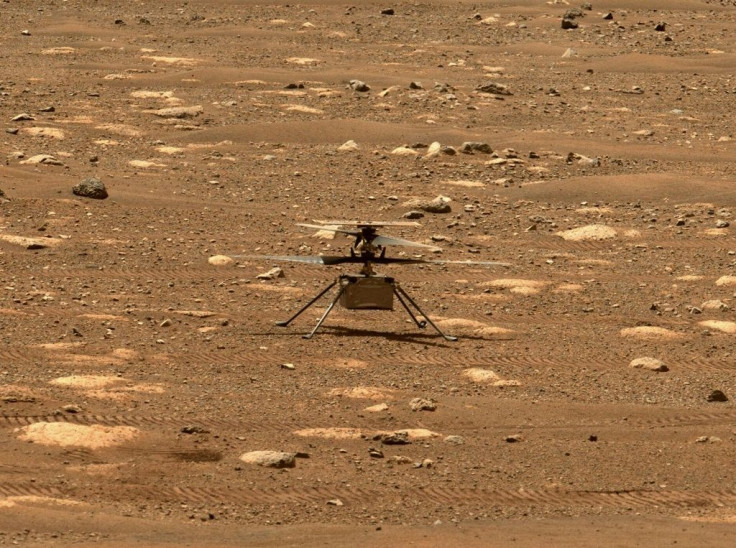NASA Ingenuity Helicopter Regains Contact After Dust Causes 'Communications Dropout'
KEY POINTS
- Martian winter led to lower temperatures and the seasonal increase in dust
- The Ingenuity helicopter likely entered a "low-power state" due to these conditions
- Ingenuity re-established communications with Perseverance rover on May 5
NASA's Ingenuity helicopter is back in contact with the Perseverance rover. The Martian winter caused an increase in dust, leading to a communications blackout.
The helicopter missed a "planned communications session" with Perseverance early last week. It was the first time such a thing happened since the rover and the helicopter began operating on Mars.
The Ingenuity helicopter relies on the Perseverance rover to receive commands and send data, NASA explained. According to the agency, it's possible that the "communications dropout" was caused by "the seasonal increase in the amount of dust in the Martian atmosphere and lower temperatures as winter approaches."
"The dust diminishes the amount of sunlight hitting the solar array, reducing Ingenuity's ability to recharge its six lithium-ion batteries," NASA noted. "When the battery pack's state of charge dropped below a lower limit, the helicopter's field-programmable gate array (FPGA) was powered down."
As the agency explained, it's possible that the helicopter's clock ended up being reset when the FPGA lost power. So even when its solar array began to charge again the next morning, the clock wasn't "in sync" with the rover's clock anymore.
"Essentially, when Ingenuity thought it was time to contact Perseverance, the rover's base station wasn't listening," NASA noted.
The Perseverance team commanded the rover on May 5 to spend the day listening for Ingenuity. The helicopter's signal finally came at 11:45 a.m. Mars time. Fortunately, Ingenuity's general health appeared to be well, although NASA noted that "one radio communications session does not mean Ingenuity is out of the woods" as dust will continue to be a problem for the helicopter.
After missing a planned comms session earlier this week, the #MarsHelicopter has re-established contact with @NASAPersevere & mission controllers on the ground. More on what happened + the team’s plan to return Ingenuity to normal operations: https://t.co/YtUaPRKbzM pic.twitter.com/DakB5CDkBb
— NASA JPL (@NASAJPL) May 7, 2022
The team has now sent new commands to hopefully avoid such problems in the future, especially amid the colder and darker Martian winter. While it remains to be seen how the helicopter will fare amid the new challenges, it has so far gone beyond expectations, going from the initial plan for five experimental flights during a short 30-day mission to an extended mission that has since logged 28 flights.
"Our top priority is to maintain communications with Ingenuity in the next few sols, but even then, we know that there will be significant challenges ahead," Teddy Tzanetos of NASA's Jet Propulsion Laboratory, Ingenuity team lead, said in the NASA news release. "I could not be prouder of our team's performance over the last year, let alone our aircraft's incredible achievements on Mars. We are hopeful that we can accumulate battery charge in order to return to nominal operations and continue our mission into the weeks ahead."

© Copyright IBTimes 2024. All rights reserved.






















